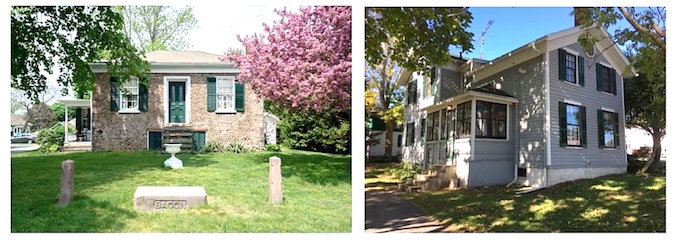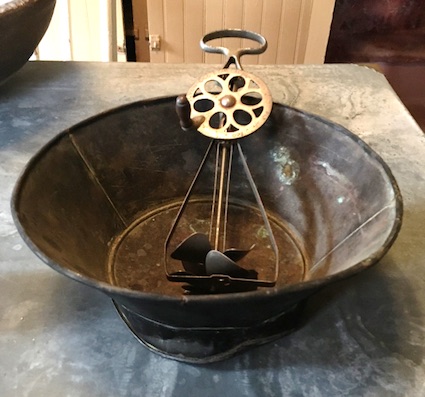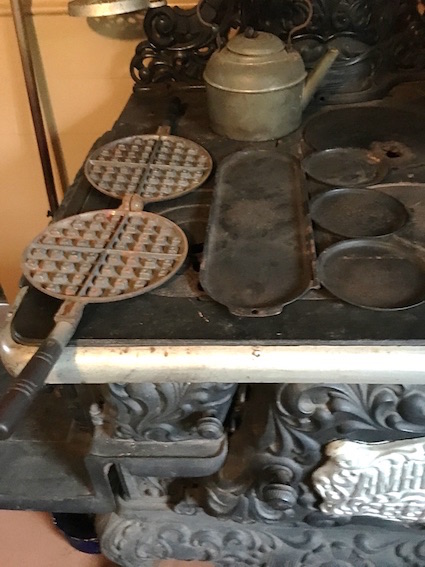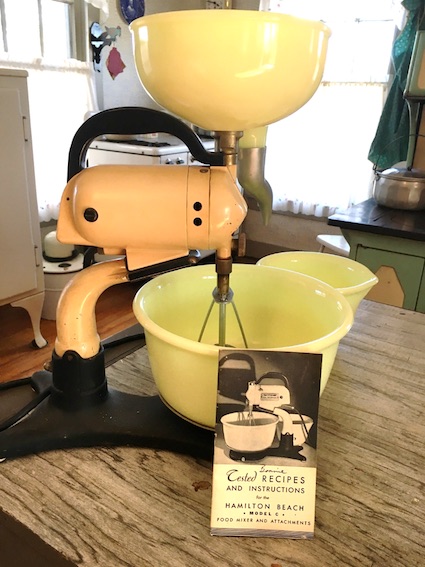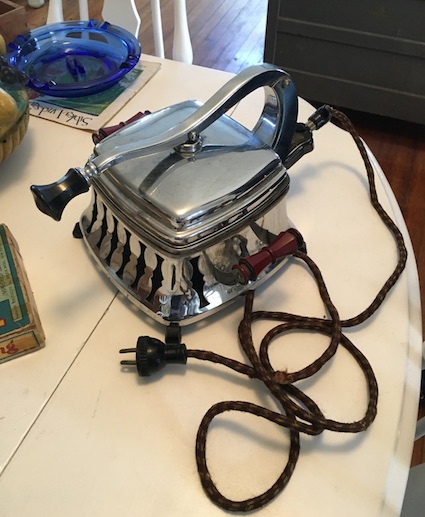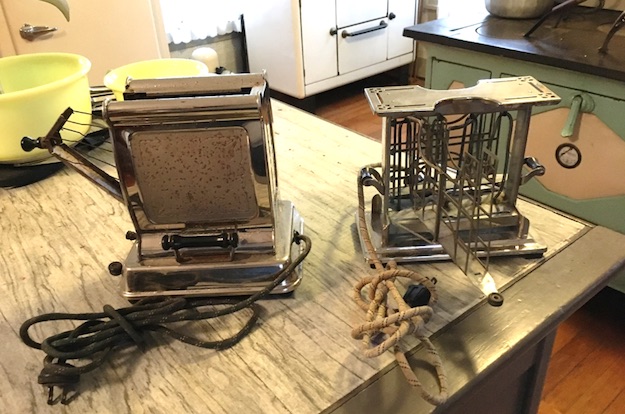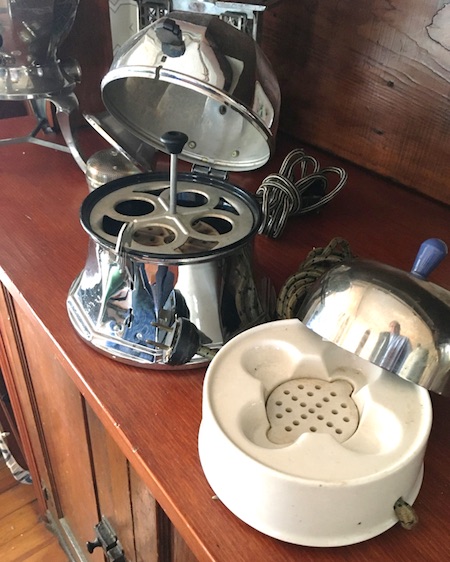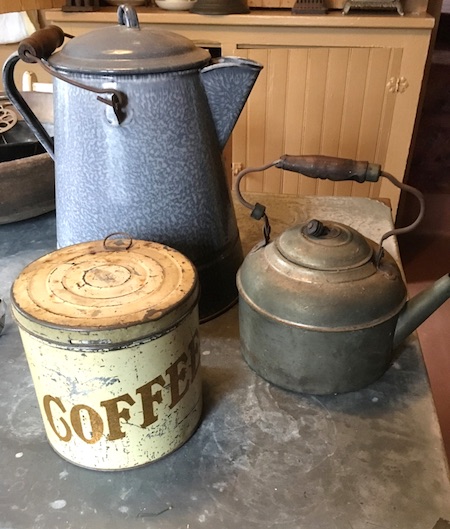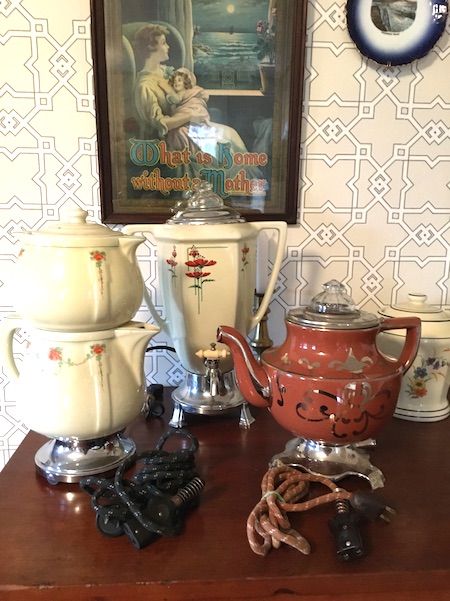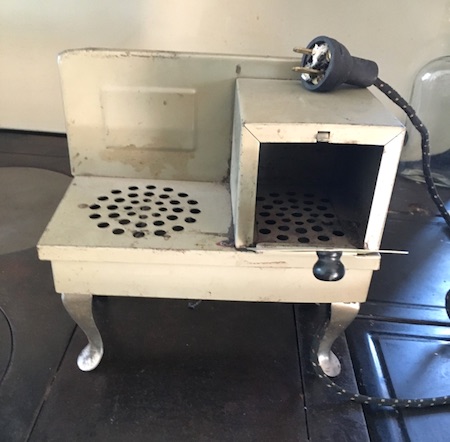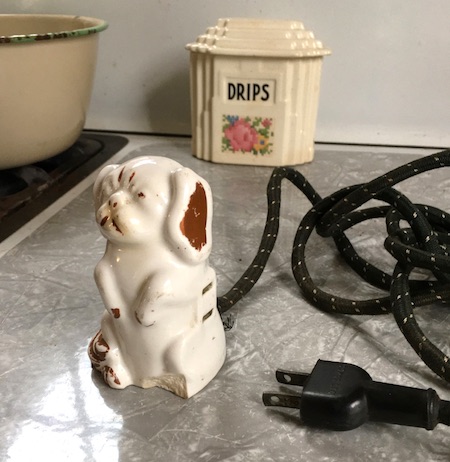Historic Childs: Electricity comes to the hamlet in Gaines (Part 4)
By Doug Farley, Cobblestone Museum Director
CHILDS – The Hamlet of Childs is fortunate to have two homes from two very different time periods that are open for public tours in season. The Ward House (left) showcases life in the Victorian Period, before the advent of electricity, and the Vagg House (right) depicts the arrival of the electric age from the 1920s-1940s.
The differences in these two homes are striking. This is the fourth article about electricity coming to the Hamlet and the changes that took place. Today we take a closer look at labor saving devices usually found in the kitchen.
If the Victorian homemaker wanted to serve her family pancakes or waffles for breakfast, she would first mix up pancake batter using a hand mixer. It was a simple mechanical device that when hand cranked, would spin its metal mixing blades to beat the lumps out of the pancake batter.
The next step would be to heat up a waffle iron or pancake griddle on the wood stove in the kitchen. In the photo above the implement on the right is a pancake maker. The liquid batter was poured into the attached receptacle cups. Then the hot metal plate could be folded over the batter to cook both sides of the pancake at the same time. This was actually a step up from simple “flapjacks” that required flipping the pancake from side to side.
In the photo above we see how time marched on in the kitchen. In the Vagg House, the electric household would most likely use an electric mixer to beat their pancake batter saving time and human energy. The mixer shown here is a Hamilton Beach Model C with Juicer attachment at the top.
This appliance was first made in 1910 and became fairly common around World War II. So common, in fact, that the original owner sold the Hamilton Beach Company and moved to Millionaire’s Row in Miami Beach after just a few decades in business. Hamilton Beach Brands was originally located in Racine, Wisconsin. The company is still doing business today, but all of their appliances are now made in China.
Once the batter was prepared in the electric mixer, the homemaker would probably use an electric waffle iron or pancake cooker to complete the process.
If all you wanted was toasted bread, the process in the 19th century involved heating bread on your wood stove or in front of an open hearth fireplace. Of course, the process at the 20th century Vagg House used an electric toaster.
Over the years, many different types of electric toasters have evolved to improve upon toasted bread. The appliance on the left made one slice of toast at a time while the unit at the right prepared two slices.
If you wanted to enjoy eggs with your toast at the Vagg House, you might have used either of these two electric egg steamers from the mid-1900s.
Making coffee over the years has evolved, too. In the Ward House, making coffee involved heating water in a teapot or kettle on the wood stove.
A wide variety of coffee appliances were present in the all-electric home like the Vagg House. The appliance on the left is called a Drip-O-Lator. The coffee maker in the center has a spigot to fill coffee cups, and the ceramic pot on the right is a percolator.
In the 1900s, electricity was even considered appropriate for children’s toys. The child’s oven shown above is probably a precursor of today’s Easy Bake Oven. This “toy” was plugged into an actual live electrical circuit which provided 120 volts of power to heat up an electric coil inside the mini-oven which got hot enough to cook food. Let’s hope there was some parental involvement, too!
With the vast number of electrical appliances in the Vagg House, finding an open electrical outlet in 1940 must have posed a problem. So, another electrical gadget was created to solve the dilemma. This ceramic device provided outlets for three other electric appliances.
Our next installment about Historic Childs will take us back to look at horse and buggy days in the Hamlet.



























